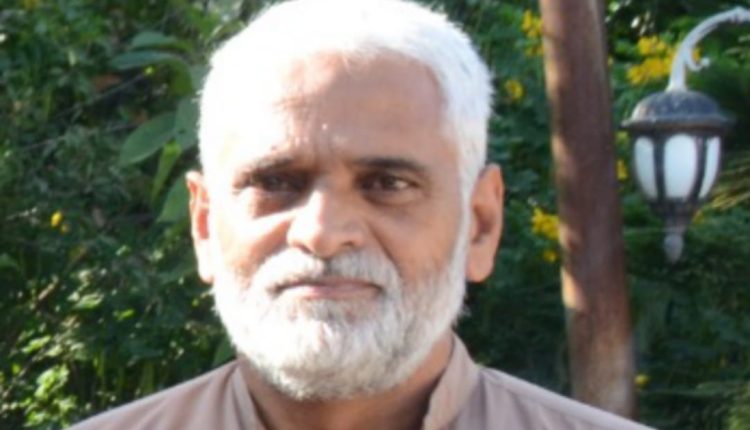By Mushtaq Hussain
The November 1947 Jammu Massacre remains one of the darkest and most systematically obscured episodes in the history of South Asia’s partition. It was neither a spontaneous eruption of communal violence nor a reaction to the tribal incursion from Pakistan, as New Delhi continues to claim. Rather, it was a meticulously planned campaign—intended to alter Jammu’s demography, eliminate Muslim political strength, and construct a convenient pretext for India’s military invasion of Kashmir.
Historical evidence and survivor testimonies indicate that between late October and early November 1947, nearly 300,000 Muslims were massacred in Jammu city and adjoining districts—Poonch, Rajouri, Udhampur, and Reasi. This large-scale violence was not the work of uncontrolled mobs but the outcome of state-directed operations led by Dogra forces, supported by Patiala troops and extremist Hindu militias affiliated with the Rashtriya Swayamsevak Sangh (RSS). The entire campaign unfolded under the silent endorsement of Indian political leaders and with the acquiescence of British officers still embedded in the Indian command structure.
The Indian assertion that its military intervention on October 27, 1947, was a defensive response to a “Pakistani tribal invasion” collapses under the weight of documentary scrutiny. As Alastair Lamb (1991) demonstrates in Kashmir: A Disputed Legacy, preparations for India’s invasion had been underway weeks before any tribal movement toward Kashmir began. Road construction, troop mobilization, and coordination with the Dogra regime were initiated by early September 1947. Similarly, Josef Korbel (1954) concluded in Danger in Kashmir that the scale of India’s early logistical movements reveals “preconceived intention rather than defensive reaction.” The British-controlled command hierarchy, still operational within India at the time, facilitated these preparations through the transfer of surplus arms to Jammu—arms that were subsequently deployed not against external combatants but against Jammu’s Muslim civilians.
Independent Kashmiri historian Dr. Iqbal Qazilbash (2017) further substantiates this view in his study The Jammu Genocide: State-Crafted Cleansing and the Making of Modern Kashmir, describing the killings as “a state-orchestrated cleansing operation intended to produce a Hindu-majority Jammu that could be safely presented as pro-India territory.” He notes that the timing of the massacre—weeks before the formal signing of the Instrument of Accession—demonstrates that the Dogra-Indian nexus had predetermined the political outcome of Jammu and Kashmir well before any tribal intervention. This finding aligns with Christopher Snedden’s (2012) analysis, which reveals that the so-called “tribal invasion” was in reality a localized revolt by the oppressed Muslim population of western Jammu and Poonch against Dogra tyranny rather than an externally directed aggression.
At the center of the premeditated design stood Maharaja Hari Singh, the Hindu ruler of a Muslim-majority state, whose administration regarded the Muslim population as a political liability. His government disarmed Muslim police and soldiers while arming communal militias with modern weaponry and logistical support. The Patiala State Forces—sent on New Delhi’s covert directive—entered Jammu before India’s official military intervention in Srinagar. Survivor accounts compiled by post-war investigators describe coordinated operations in which Patiala troops and RSS militias moved from village to village, rounding up Muslim men, executing them in groups, and burning entire settlements. Women were abducted, violated, or disappeared, while caravans of refugees heading toward Sialkot were ambushed under state supervision. The cumulative objective was unmistakable: to decimate the Muslim presence in Jammu and reshape its demographic character.
India’s political leadership of the time cannot be absolved. Prime Minister Jawaharlal Nehru, Home Minister Vallabhbhai Patel, and Mahatma Gandhi were all aware of the unfolding massacres. Patel maintained active communication with both the Maharaja and the Patiala ruler but took no remedial action. Nehru, despite professing secular ideals, publicly echoed the claim that India’s intervention was necessitated by “tribal aggression.” Gandhi, who wielded considerable moral authority, remained notably silent on the Jammu atrocities even as he condemned communal violence elsewhere. Lamb (1991) remarks that “Delhi’s silence at that hour was as deliberate as its later justification of intervention.”
In this process of narrative construction, Sheikh Abdullah, then a rising Kashmiri political leader, inadvertently reinforced India’s justification. While initially sympathetic to popular Muslim sentiment, his later alignment with Nehru’s Congress framework and endorsement of the accession under Indian terms provided the moral and political cover New Delhi required. Abdullah’s subsequent rationalization—that Indian troops entered Kashmir solely to repel tribal invaders—became a key pillar of the official Indian narrative, despite overwhelming historical evidence to the contrary.
By the time the violence subsided, Jammu’s Muslim population had been shattered. Entire communities were eradicated; trains bound for Sialkot arrived filled with corpses, and hundreds of villages disappeared from official maps. Of the nearly 700,000 Muslims who once inhabited Jammu province, only a fraction remained. British authorities, preoccupied with managing partition, turned a blind eye, while India buried the episode under decades of denial and silence.
As Victoria Schofield (2010) observes in Kashmir in Conflict, the Jammu massacres marked “the violent prelude to India’s annexation of Kashmir.” The slaughter was not an aberration of partition but a calculated act of political engineering designed to erase a community and fabricate legitimacy for India’s military occupation. The evidence—archival, testimonial, and historiographical—converges on one conclusion: the invasion of Kashmir was preplanned, the massacres were deliberate, and the narrative of tribal aggression was a convenient falsehood.
The Jammu Massacre thus stands as both a human tragedy and a geopolitical stratagem. It reveals how orchestrated violence was employed to redraw demography, suppress self-determination, and manufacture justification for annexation. The ghosts of November 1947 continue to challenge the sanitized history propagated by the Indian state—a history in which truth remains its first and most enduring casualty.

